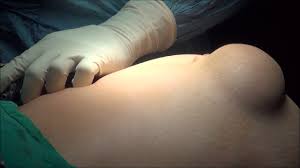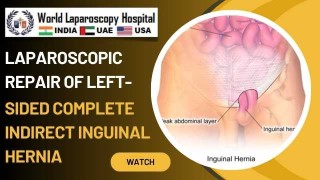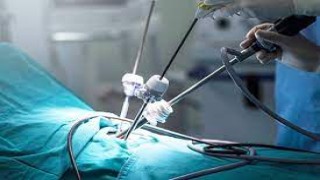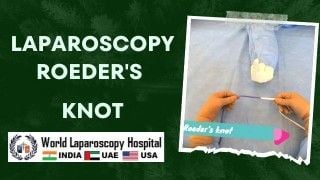Laparoscopic Incisional Hernia Repair after previous Mc Burney's incision
Add to
Share
143 views
Report
1 month ago
Description
An incisional hernia is a common complication following abdominal surgery, occurring at or near the site of a previous surgical incision due to weakening of the abdominal wall. One such scenario involves patients with a previous McBurney's incision, typically performed for appendectomy. Repairing hernias in these patients poses unique challenges, and laparoscopic surgery has emerged as a safe and effective approach. Challenges of Repair after McBurney’s Incision The McBurney's incision is made in the right lower quadrant, often oblique, which may lead to: Adhesions between the bowel and abdominal wall. Altered anatomy complicating laparoscopic port placement. Thinner or weaker fascial layers, increasing risk of recurrence if not properly reinforced. Advantages of Laparoscopic Repair Laparoscopic incisional hernia repair offers several benefits compared to open surgery, especially in post-McBurney cases: Minimally invasive: Reduced postoperative pain and faster recovery. Better visualization: Laparoscopy allows identification of adhesions and safe dissection of the hernia sac. Mesh placement: Intraperitoneal or preperitoneal mesh can be securely positioned, reducing recurrence risk. Reduced wound complications: Lower rates of infection and seroma formation. Surgical Technique The laparoscopic approach generally involves the following steps: Patient positioning and anesthesia: Under general anesthesia, the patient is positioned supine. Port placement: Ports are carefully inserted away from the previous McBurney incision to avoid injury to bowel adhesions. Usually, a supraumbilical port is used for the camera, with two or three additional working ports in the contralateral quadrants. Adhesiolysis: Gentle separation of adhesions between the bowel and abdominal wall is critical to prevent enterotomy. Hernia sac reduction: The hernia sac is reduced completely into the peritoneal cavity. Mesh selection and placement: A suitable composite or dual-layer mesh is introduced and fixed either with tackers or sutures, ensuring adequate overlap (usually 3–5 cm beyond the defect). Closure and port removal: Ports are closed carefully, and the patient is monitored postoperatively. Postoperative Care Early ambulation and respiratory exercises are encouraged. Pain management is easier compared to open repair. Patients are usually discharged within 24–48 hours, depending on the complexity. Follow-up includes monitoring for seroma, infection, or recurrence. Outcomes Studies and case reports have shown that laparoscopic repair after a previous McBurney incision is safe, feasible, and associated with lower recurrence rates than open repair. Proper adhesiolysis and mesh fixation are key factors in success. Conclusion: Laparoscopic incisional hernia repair in patients with a previous McBurney incision is an effective minimally invasive solution. With careful preoperative planning, meticulous adhesiolysis, and proper mesh placement, patients can benefit from faster recovery, reduced postoperative pain, and excellent long-term outcomes.
Similar Videos






